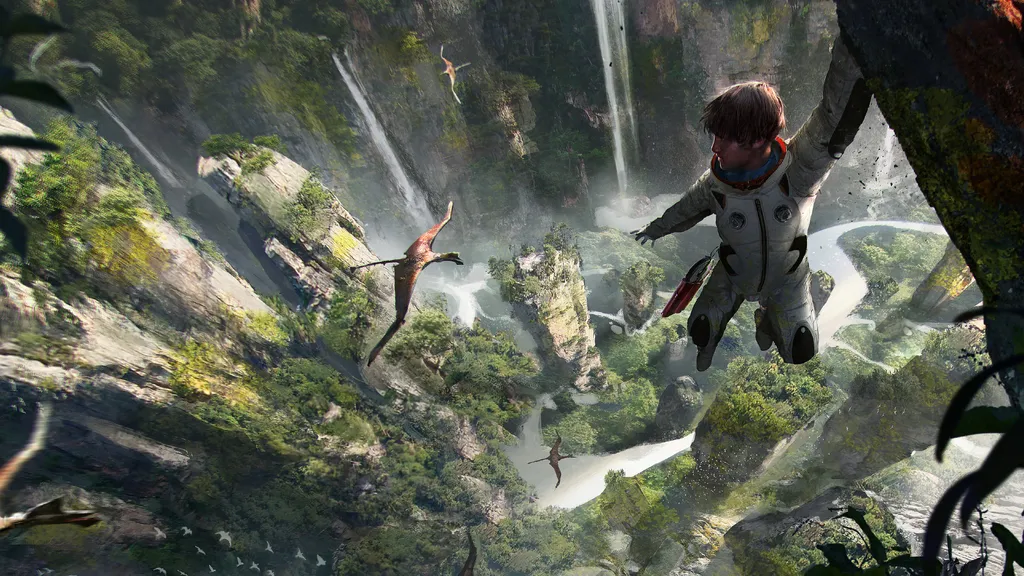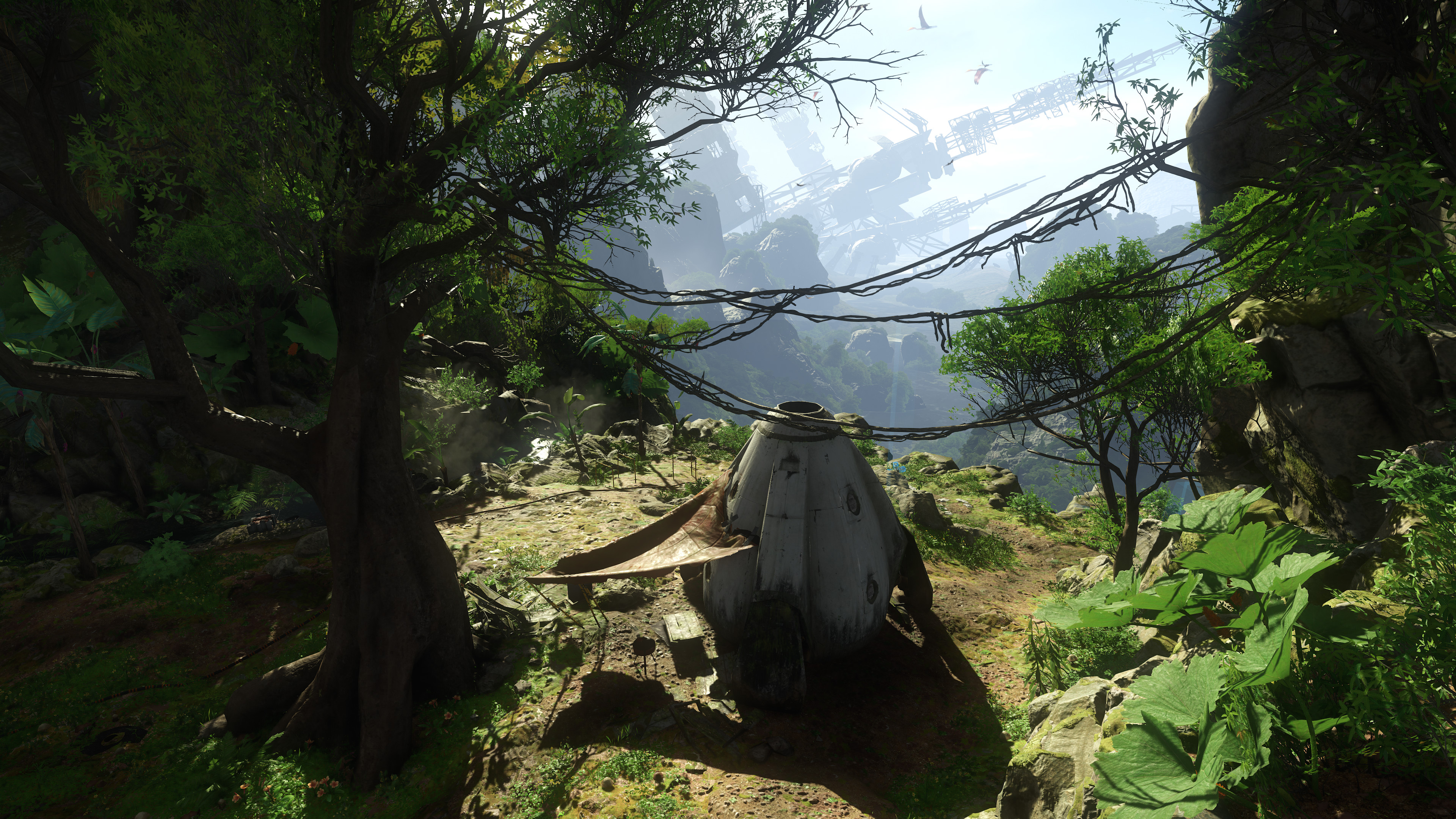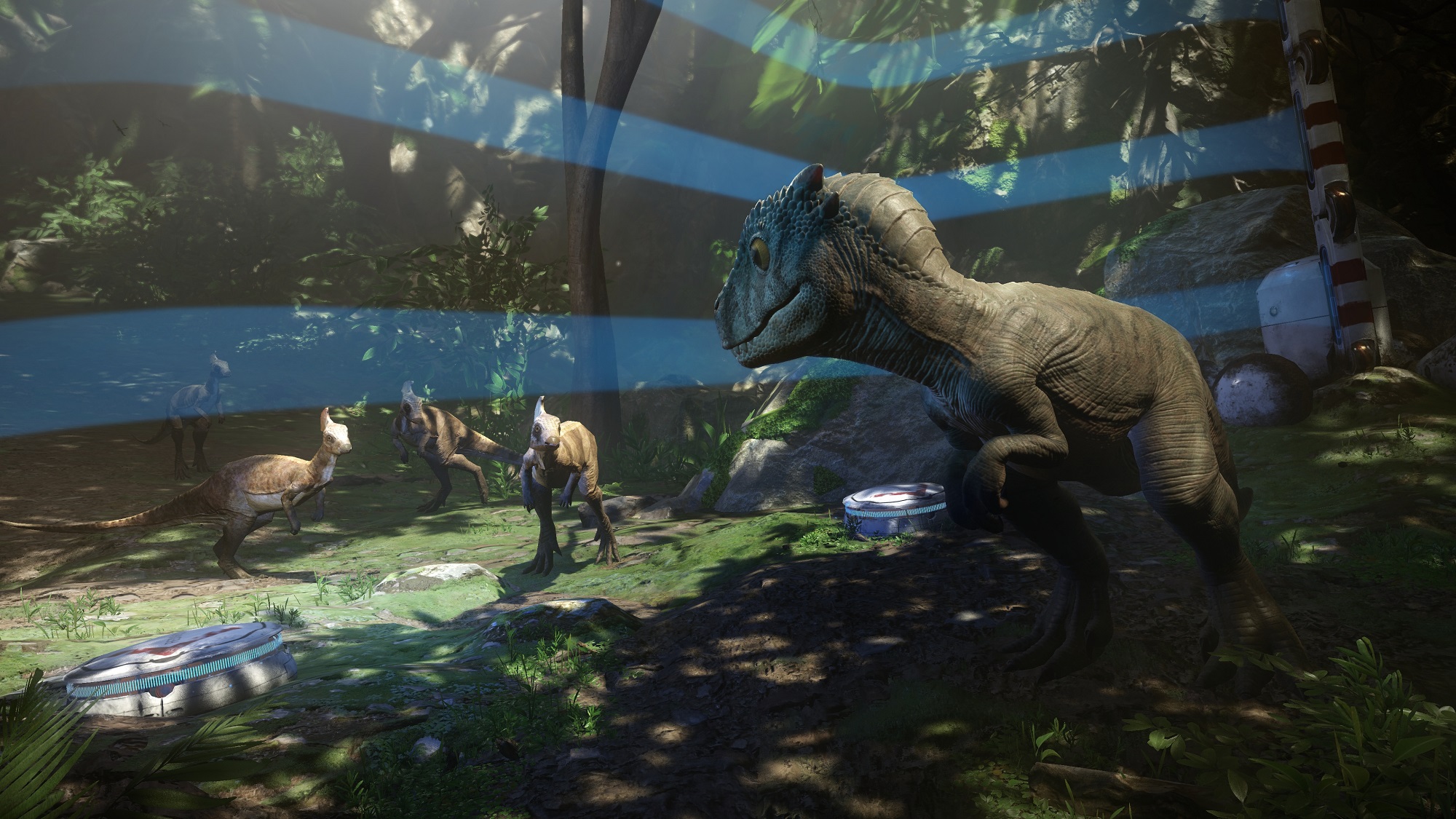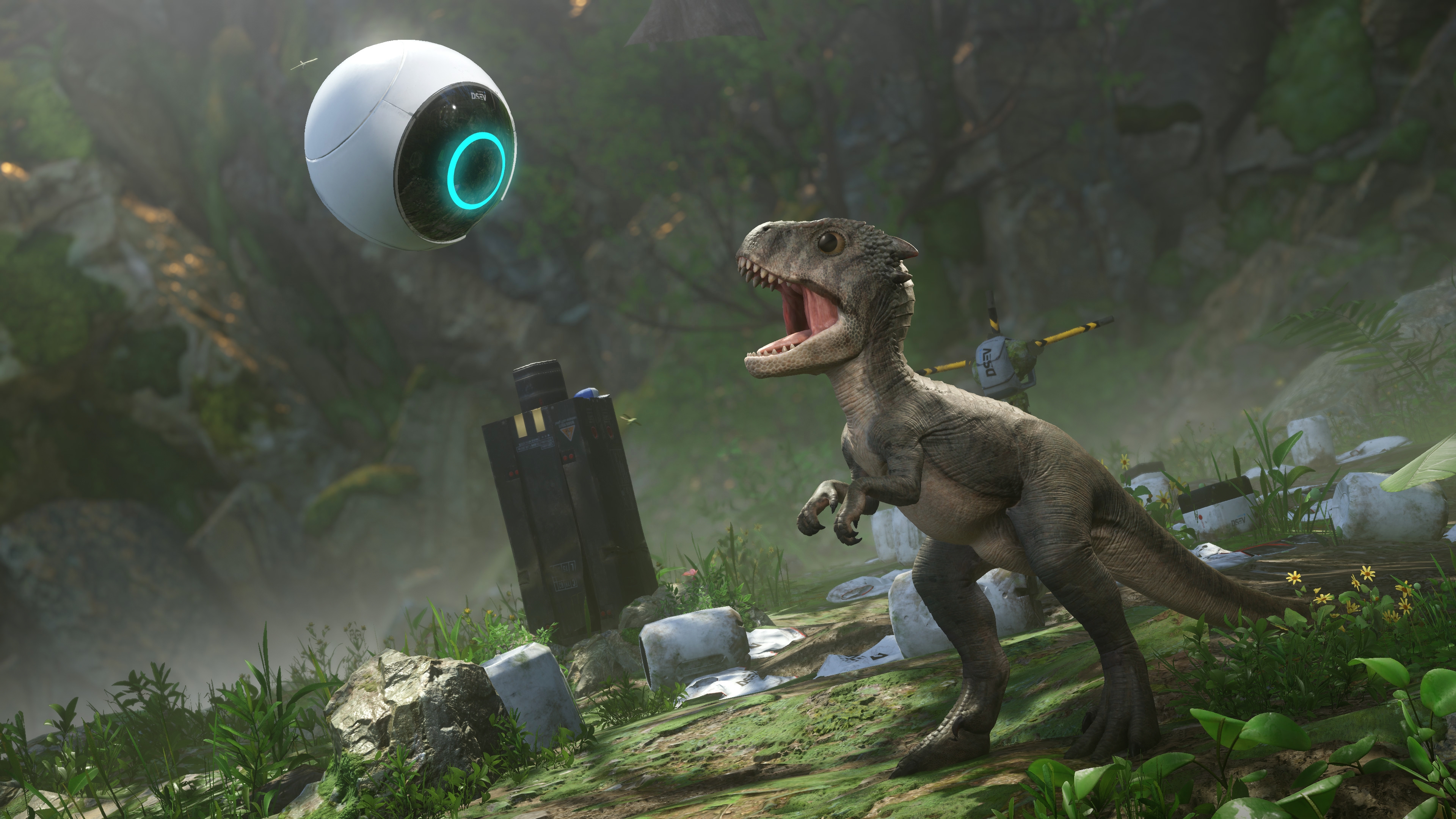Mark my words: we’re all going to be sick of dinosaurs pretty soon. After an extended leave of absence from our planet, they’re set to make a virtual come back with VR headsets, and you can be sure that we’ll see plenty of games and experiences that let you get closer to them than any book, movie or TV show in the last century has. We’re going to see a flood of VR Jurassic Parks in the years to come.
Fortunately for Crytek, Robinson: The Journey is getting in on the ground floor. The German developer’s new VR game — its second since Rift exclusive The Climb — comes to PlayStation VR this week as the platform’s first game to feature dinosaurs. As such, it’s got an element of wonder on its side that may well diminish with each return trip to the land before time. For now, though, it’s the star of the show in a lavishly produced adventure in which fun comes with a fairly regular dose of frustration.
Though it features billion year old beasts, Robinson is actually a sci-fi tale. In it, you’re cast as a young boy named Robin that survives a crash-landing on Tyson III. This uncharted new dinosaur-infested planet was the subject of a human colonization mission until something went wrong, bringing Robin’s enormous ship tumbling to the planet’s surface with no other signs of survivors. Rather than picking up from that disaster, we join Robin around a year into his stay on the planet as he’s set up camp, accompanied by his floating AI companion, HIGS, and a pet dinosaur named Laika.
When Laika discovers another destroyed HIGS unit with data banks that reveal more about the crash, you set out to find others and gather as much information as possible in the hope that you might find other survivors.
Robinson opens with a sweeping vista of your new home that suggests there’s an entire world to explore here, but you’ll really be limited to about five small to medium-sized areas. In each you’ll scale walls with orange-tinted rocks, vines and debris, pick up objects to clear paths or make new ones, and even assume the role of HIGS to complete simple power-distribution puzzles from high above.
The single most impressive aspect of the game is just how detailed each of these areas is. I played the game on a standard PS4 and I was often awe-struck at how beautiful Robinson looks, not just for the platform but for VR as a whole. Jungles are thick mazes of leafy greens with rich and varied vegetation and eye-candy that invites you to simply sit and stare into the distance a while. Textures are crisper than anything yet seen in PS VR, and everything stands up to the close scrutiny that positional tracking affords. If Robinson is intended as a showcase for the power of Crytek’s Cryengine, it certainly succeeds.
Best of all each area is teeming with strange and fantastic wildlife that’s a real joy to inspect up close (if they don’t scurry away). You can scan each with a device in your right hand, gathering up green dots that appear on the given creature while avoiding red ones. It’s a neat little mini-game mechanic, that gives a sense of interactivity and purpose to a feature that could have easily become monotonous. You really feel like a kid on the sci-fi field trip of a lifetime.
But Robinson isn’t just a simple exploration game; it’s got some puzzles and action mechanics to its name too. The latter mainly comes from the climbing, which is ripped straight out of The Climb, or rather the Back to Dinosaur Island 2 tech demo that preceded it. To start clambering up a wall you walk up to a hold and Robin’s floating hands will get ready to grab it. From there you use L2 and R2 as your left and right hands respectively, looking at the next rock you want to grab than holding it with your spare hand.
As its best, this is a fluid system that feels a bit like a first-person Uncharted might. Towards the end of the game you’ll find sections where you have to actually let go of your current hold and grab one below in free fall, which gets your heart racing if only because failure might mean repeating an entire sequence. At its worst, the controls can fight you, with hands refusing to grab the rocks they’re hovering in front of. That’s especially frustrating when the hold you’re on will temporarily disappear or a dinosaur is threatening to throw you off.
You get the sense that these mechanics might be improved with potential PlayStation Move support (or Oculus Touch/Vive wands considering the PlayStation Blog suggests this is a timed exclusive). The rest of Robinson plays fine on the DualShock 4, and I found it perfectly comfortable, but the pair of floating hands in front of you constantly suggests better input solutions are on the way. They’d really help you to defend yourself against some creatures.
And dinosaurs can indeed kill you. Late-game stealth sections in which you crawl around debris trying to avoid raptors are wonderfully tense affairs. Even when caught I found it difficult to stand in front of one of these beasts and accept my fate; VR made me feel like they were going to pounce on me and start chomping away, and it was enough to make me shut my eyes and turn my head. That plays particularly well into one of the best jump scares in recent memory, which still had me laughing in embarrassment five minutes after I had sprung out of my chair.
Puzzles, though, often suffer from a lack of clarity. Robinson is the kind of game where it’s easy to get stuck for 20 – 30 minutes not sure what to, only to find the solution out of luck and then get stuck once more five steps on. You’ll often need Laika to roar at animals to move them out of the way which is easy to grasp, but when you suddenly reach the unexpected end of a path and can’t figure out where to go next fatigue quickly sets in. An early object hunt in which you seek four blades for a wind turbine should only take a few minutes, but I was still looking long after the search had worn out its welcome, and it set the tone for things to come.
Perhaps it’s another key learning from VR; because I had an entire world to explore I felt less directed in where I should look and often missed simple things. This happened several times throughout and at one point I even looped through an environment several times before I spotted the tiny detail I’d missed. The game probably could have benefited from a deeper hint system, though this did serve to pad out what is an otherwise short experience.
I spent around four and a half hours with Robinson though it could easily be finished faster than that. That’s actually longer than many VR experiences, but the game doesn’t explore the full potential of its mechanics in that time, and doesn’t feel like it gives you the complete story. An abrupt ending suggested there was plenty more to come, and missing out on Robin’s early days on Tyson III in which he finds his feet is a shame, especially seeing as there are some really interesting dynamics between himself, HIGS and Laika.
HIGS immediately reminds you of Portal 2‘s Wheatley with his fussy attitude and his contention with Robin keeping a baby dinosaur forms the heart of the story. The theme of co-existence runs deep, and it’s something I would have like to have seen explored more.
For both better and worse, Robinson: The Journey feels like the first act of a bigger story. On one hand the gorgeous environments, interesting themes and tenser action sequences make me want to see much more of this world, but that’s only because everything here feels like just the tip of the iceberg. This is PS VR’s grandest adventure yet, but a deeper sequel that fights off frustration, adds to the mechanics and expands on the story could go much further still.





























